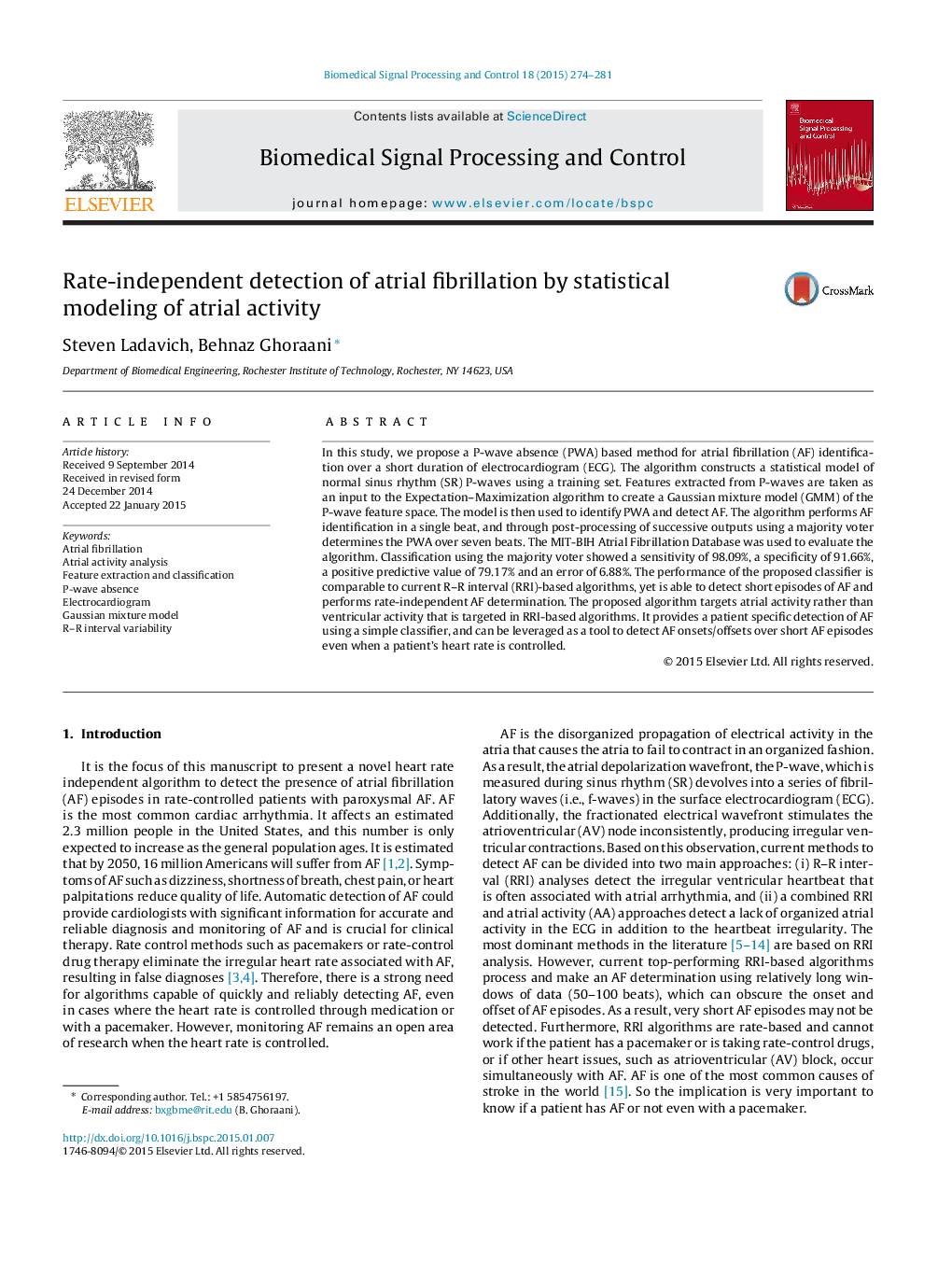| Article ID | Journal | Published Year | Pages | File Type |
|---|---|---|---|---|
| 6951409 | Biomedical Signal Processing and Control | 2015 | 8 Pages |
Abstract
In this study, we propose a P-wave absence (PWA) based method for atrial fibrillation (AF) identification over a short duration of electrocardiogram (ECG). The algorithm constructs a statistical model of normal sinus rhythm (SR) P-waves using a training set. Features extracted from P-waves are taken as an input to the Expectation-Maximization algorithm to create a Gaussian mixture model (GMM) of the P-wave feature space. The model is then used to identify PWA and detect AF. The algorithm performs AF identification in a single beat, and through post-processing of successive outputs using a majority voter determines the PWA over seven beats. The MIT-BIH Atrial Fibrillation Database was used to evaluate the algorithm. Classification using the majority voter showed a sensitivity of 98.09%, a specificity of 91.66%, a positive predictive value of 79.17% and an error of 6.88%. The performance of the proposed classifier is comparable to current R-R interval (RRI)-based algorithms, yet is able to detect short episodes of AF and performs rate-independent AF determination. The proposed algorithm targets atrial activity rather than ventricular activity that is targeted in RRI-based algorithms. It provides a patient specific detection of AF using a simple classifier, and can be leveraged as a tool to detect AF onsets/offsets over short AF episodes even when a patient's heart rate is controlled.
Related Topics
Physical Sciences and Engineering
Computer Science
Signal Processing
Authors
Steven Ladavich, Behnaz Ghoraani,
